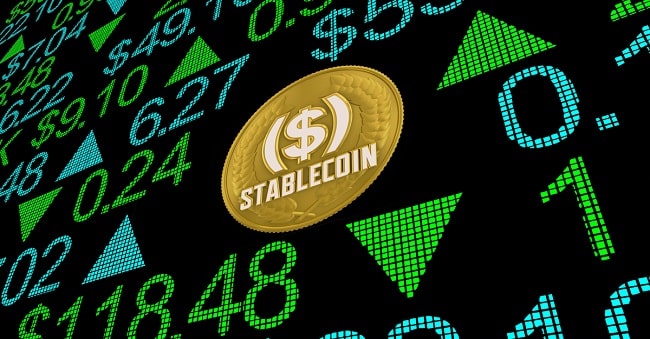Stablecoins: Not Ready Yet for Prime Time

Cryptocurrency is a fast-evolving market. Coins are being launched all the time. New cryptocurrencies seek to innovate or outperform the existing ones on the market with some new technical advance or business use case. Stablecoins are a relatively recent development in the field that remove the excessive volatility of Bitcoin and altcoins (such as Dogecoin and Shiba Inu) by pegging the value of their crypto to a fiat currency or another asset.

However, although they offer advantages compared to other cryptocurrencies, to reach the point where they can fulfill their promise stablecoins must:
- Reassure investors that their savings are protected from the insolvency or hack of investment platforms.
- Become connected to established financial institutions
- And most important, they must maintain enough reserves to keep their peg to fiat currencies and retain their established value.
Stablecoins are born
The first stablecoin issued was Tether in 2014. Each tether owner receives one token for every dollar they deposit and is supposed to be able to redeem tethers for dollars at any moment. However, there are questions regarding whether Tether is a fully backed stablecoin scheme.
As of the end of July 2021, more than half of the $117 billion market capitalization of all stablecoins was in Tether. Several other major stablecoins are pegged to the dollar, including Pax (USDP) and USD Coin (USDC).

Originally, stablecoins were primarily used as a means of exchange for other cryptocurrencies, like Bitcoin, because many cryptocurrency exchanges had problems enabling users to convert crypto back into bankable fiat assets. Stablecoins enabled crypto investors to de-risk their crypto holdings without entirely exiting the crypto ecosystem and encountering the problems that entailed. They were made less to replace fiat and more to answer a pain point in the cryptocurrency ecosystem.
Stablecoins are, nevertheless, more useful than country-issued currencies because you can use them anytime, anywhere – without relying on banks. They also don’t incur special cash advance fees as do credit cards when used to purchase crypto.
Other benefits of stablecoins
Stablecoins are also useful because they can work with smart contracts on blockchains, which, unlike conventional contracts, require no legal authority to be executed. The software code automatically determines the terms of the agreement and how and when money will be transferred. This makes stablecoins programmable in ways that dollars can’t be.

The development of smart contracts have given rise to the use of stablecoins in trading, lending, payments, insurance and more.
Spending stablecoins also offers an upside compared to other cryptocurrencies in that such purchases don't trigger a taxable event—in contrast to the current IRS rules for Bitcoin and other forms of digital currency.
What’s still missing
Despite these positives, there is still much uncertainty surrounding stablecoins due to a lack of regulation.
This is why the President’s Working Group for Financial Markets in the U.S. in November called for Congress to enact legislation that would ensure a federal regulator oversees the stablecoin industry.

In the report released by the group it said that stablecoins pose a risk to users due to the possibility that they may break their peg, which could lead to a run on the stablecoin. This would harm investors who expect the token to maintain price parity with the fiat currency to which it’s pegged.
Without the ability to maintain their pegs, stablecoins aren’t much different from the private money issued by banks in 19th century America. Unsecured money that led to repeat bank runs in U.S. financial history.
Mainstreaming stablecoins as an asset class
Money can be made by depositing stablecoins in interest-bearing accounts. However, such accounts are not protected by the Federal Deposit Insurance Corporation (FDIC) and the platforms that offer these products are not members of the Securities Investor Protection Corporation (SIPC). This means that if the platform that provides such opportunities goes belly-up the depositor could lose all their money.
At present, several of the major stablecoin projects make inaccurate claims regarding the safety of their assets in the event of bankruptcy. They also lack the relationships with major banks that money market funds have that would facilitate a bail-out in the event of adverse market events. In the event a bailout is needed, it’s not even clear that an intermediary bank would be able to provide the funds to a stablecoin company according to Fed rules.
Additionally, stablecoins held on crypto exchanges are vulnerable to hacking. This is because the exchange holds the private cryptographic key that enables the user to access their stablecoin funds. Once the exchange security is breached and the key is copied, there is nothing that can be done to prevent the criminal from stealing the owner’s funds. The current environment enables the equivalent of Wild West bank robbery, with account holders left out of pocket.
Grasping the bigger picture
Without the regulation that currently protects the banking system, stablecoins won't fulfill their promise as a stable store of value. Stablecoins are an interesting advance in the world of currency but without adaptations that would make them more like bank deposits they are too high risk to replace what preceded them.
For more payments related stories and information, check out the Justt blog.
Take the next step and contact us






